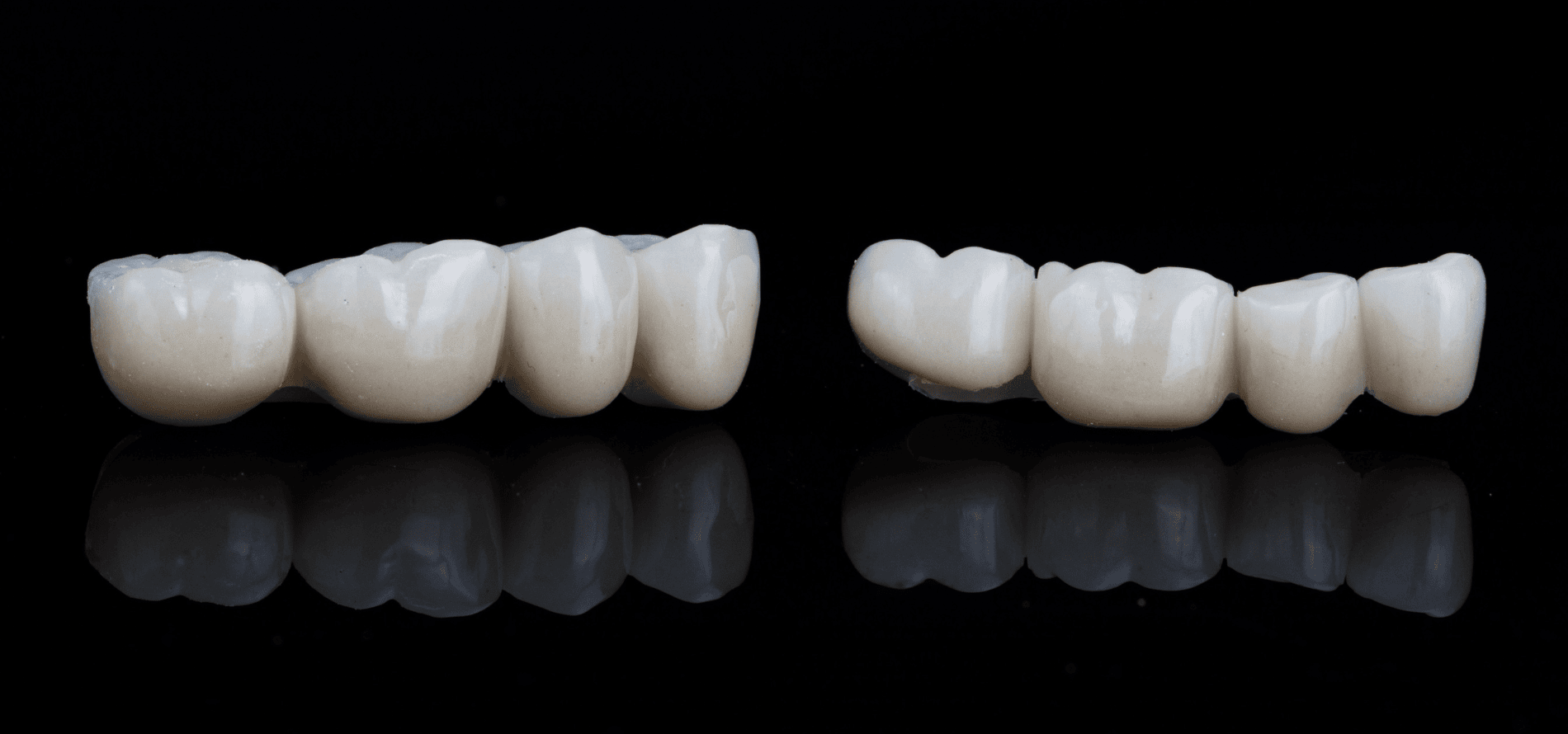
Reclaim Your Bite and Smile with Durable Dental Bridges!
Dental bridges not only fill gaps left by missing teeth but also prevent adjacent teeth from shifting, which can cause bite problems and additional tooth loss. They provide a long-lasting solution, enhancing both your oral health and confidence.
Dental bridges consist of artificial teeth (pontics) anchored by dental crowns on adjacent natural teeth or dental implants. They effectively fill the gaps left by missing teeth, preventing issues such as shifting teeth and bite problems.
Types of Dental Bridges:
- Traditional Bridges: These are the most common type of bridges and consist of one or more pontics held in place by dental crowns on adjacent natural teeth.
- Cantilever Bridges: A cantilever bridge may be used when only one adjacent tooth is available. It involves placing a crown on the single supporting tooth.
- Maryland Bridges (Resin-Bonded Bridges): These bridges use a metal or porcelain framework that is bonded to the backs of adjacent teeth, eliminating the need for crowns. Maryland bridges are typically used for front teeth.
When do you need dental bridges?
- Tooth Replacement: Dental bridges are used to replace one or more missing teeth.
- Prevention of Shifting: They help prevent the remaining natural teeth from shifting out of their positions, which can occur when there is a gap.
Advantages of Dental Bridges:
- Tooth Replacement: Bridges effectively replace missing teeth, restoring the ability to bite, chew, and speak.
- Prevention of Shifting: By filling the gap left by missing teeth, bridges help prevent adjacent teeth from shifting out of position.
- Aesthetics: Depending on the materials used, dental bridges can provide a natural and aesthetically pleasing appearance.
Aftercare:
- Oral Hygiene: Regular brushing, flossing, dental check-ups and cleans are crucial to maintaining the health of the bridge, the surrounding teeth and gums.
- Dietary Considerations: Patients may be advised to avoid excessively hard or sticky foods to prevent damage to the bridge.
The Dental Bridge Process
Consultation and Evaluation
During your initial consultation at Facial Harmony Skin & Dental, our experienced dentists will evaluate your oral health, discuss your treatment goals, and determine if dental bridges are the right option for you. This may involve taking X-rays or scans to assess the health and integrity of your adjacent teeth and jawbone.
Treatment Planning
If dental bridges are recommended, our dental team will create a personalised treatment plan tailored to your specific needs and goals. This may include selecting the type of bridge, determining the number of pontics required, and scheduling any additional procedures, such as tooth extraction or implant placement, if necessary.
Bridge Preparation
Before placing the bridge, the adjacent teeth or implants will be prepared by removing a thin layer of enamel to create space for the crowns or abutments. Impressions of your prepared teeth will be taken to ensure a custom-fit bridge that blends seamlessly with your natural smile.
Bridge Fabrication
Once the bridge design is finalised, it will be custom-crafted in a dental laboratory to match the shape, size, and colour of your natural teeth. Temporary restorations may be worn during this time to maintain function and aesthetics while the final bridge is being fabricated.
Bridge Placement
Once the final bridge is ready, it will be securely bonded or cemented onto the prepared teeth or implants, completing your smile transformation and restoring full function and aesthetics.
Book Online
If you’re missing one or more teeth and looking for a reliable and long-lasting solution to restore your smile, dental bridges may be the ideal option for you. Schedule a consultation at Facial Harmony Skin & Dental today to learn more about our custom dental bridge services and take the first step towards a confident, healthy smile.